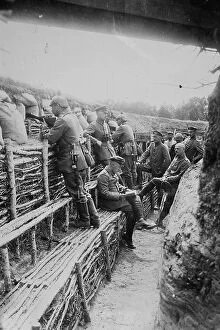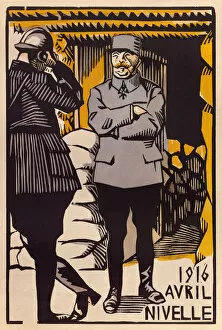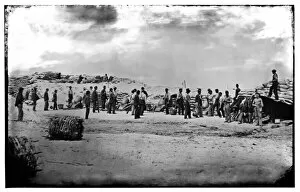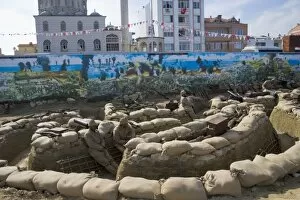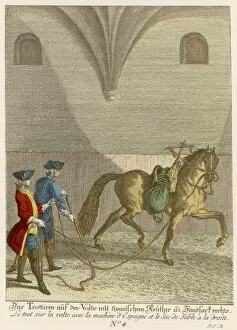Sand Bag Collection
"Sand Bags: The Unsung Heroes of Warfare" From the General Nivelles Offensive during the Battle of Verdun to the Union mortars on Morris Island
All Professionally Made to Order for Quick Shipping
"Sand Bags: The Unsung Heroes of Warfare" From the General Nivelles Offensive during the Battle of Verdun to the Union mortars on Morris Island, sand bags have played a crucial role in changing German infantry tactics and fortifying defensive positions. These unassuming sacks filled with earth or sand have been used as makeshift barriers and protective structures throughout history. In April 1916, during the color woodcut depiction of the General Nivelles Offensive, sand bags were strategically placed to shield soldiers from enemy fire. This simple yet effective weapon altered German infantry tactics by providing cover and allowing troops to advance under protection. During World War One, a soldier looking through a trench periscope captured an image that symbolized both resilience and vulnerability. The presence of sand bags surrounding him showcased their importance in safeguarding soldiers' lives amidst chaotic battlefields. Not limited to European conflicts, sand bag defenses were also utilized in South Africa during the Victorian era. A stereoview card from circa 1900 depicted Irish troops firing while soldiers tended to wounded comrades behind sturdy barricades made of sand bags. Fast forward to World War Two; black-and-white photographs revealed soldiers sleeping peacefully within shell craters lined with sand bags. These improvised shelters provided much-needed respite for exhausted warriors amidst relentless warfare. Sand bag defenses continued into more recent times as well. In Jericho road, potash lorries burned while a towering structure made entirely out of these humble sacks stood tall against potential threats. Whether it was protecting important sectors near Fauquissart guarding Calais or completing city preparedness measures, countless examples demonstrate how versatile and vital these unassuming objects are in military operations worldwide. From Russian rifle pits transformed into British strongholds to tanks launching coordinated attacks alongside infantry forces - all benefited from the reliability offered by this ingenious invention called "sand bag. " Their ability to absorb impact saved lives and allowed armies across generations to adapt swiftly on the ever-changing battlefield.





